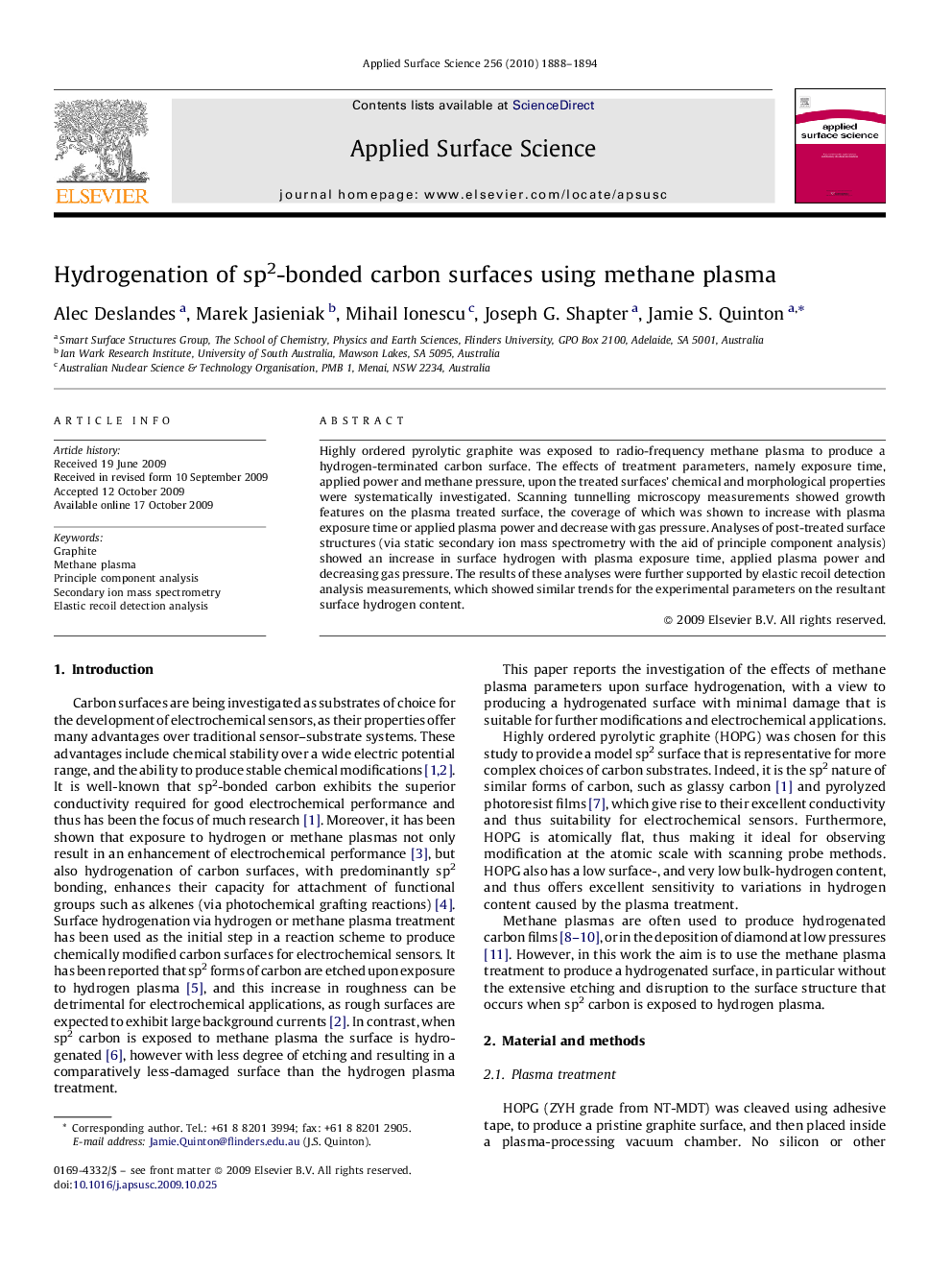| Article ID | Journal | Published Year | Pages | File Type |
|---|---|---|---|---|
| 5363747 | Applied Surface Science | 2010 | 7 Pages |
Abstract
Highly ordered pyrolytic graphite was exposed to radio-frequency methane plasma to produce a hydrogen-terminated carbon surface. The effects of treatment parameters, namely exposure time, applied power and methane pressure, upon the treated surfaces' chemical and morphological properties were systematically investigated. Scanning tunnelling microscopy measurements showed growth features on the plasma treated surface, the coverage of which was shown to increase with plasma exposure time or applied plasma power and decrease with gas pressure. Analyses of post-treated surface structures (via static secondary ion mass spectrometry with the aid of principle component analysis) showed an increase in surface hydrogen with plasma exposure time, applied plasma power and decreasing gas pressure. The results of these analyses were further supported by elastic recoil detection analysis measurements, which showed similar trends for the experimental parameters on the resultant surface hydrogen content.
Keywords
Related Topics
Physical Sciences and Engineering
Chemistry
Physical and Theoretical Chemistry
Authors
Alec Deslandes, Marek Jasieniak, Mihail Ionescu, Joseph G. Shapter, Jamie S. Quinton,
